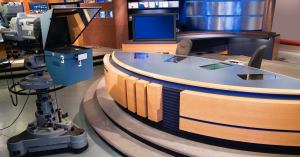The third stimulus is officially on its way into the hands of American citizens. With the House and Senate officially approving the $1.9 trillion spending bill that will send out $1,400 stimulus checks to Americans in need. While it is not the $2,000 that was promised ahead of the Georgia run-off election, which some have criticized Biden and the Democrats over, it is a much needed slice of relief for most Americans.
But when it comes to the stimulus payments, where does the funding actually come from? Is it from taxes? Not so much. There is actually a simpler, technical explanation for where these funds come from and who has to pay them back. According to CNBC, taxes are the consensus and foremost reason behind the funding, but it isn’t as simple as that. In a post from Robert Exley Jr., he has Sahil Bloom, Vice President of Altamont Capital Partners, run-down where most of that money released by the Federal Reserve originates. He includes some updating on the idea of “printing money.” Watch the video here.
Videos by PopCulture.com
As Bloom points out, the solution to the funding is far simpler than expected. After Congress passes the legislation with the stimulus payments inside, the Department of Treasury takes over to and issue bonds and notes to promise to pay back the money. So yes, most of your direct stimulus payments come from loans or IOUs in a way, but it doesn’t end there. Since we’re a deficit spending economy, we have to have that third-party lender to help out. We’ve borrowed from China and other nations in the past, but the source of the funds could be anywhere, according to Bloom. But in his example, he goes to the Federal Reserve.
The Federal Reserve is where the “money printing” comes into play. While the old days would see money printed, today the Fed can digitally move a decimal point and buy the bonds from the Treasury. “We live in a digital age. So really money is just numbers on a screen,” Bloom says, according to Exley at CNBC.
The Fed would then place the debt on its balance sheet, keep it as an asset down the road, leaving it to join the growing total. As Bloom points out in the video, the current total this year is around $7 trillion.
He then explains inflation and how it could come into play, defining it as when the cost of goods and services increases, while the value of the money falls. It’s how we would see eye-opening prices for a loaf of bread in other nations hit by hyperinflation. Inflation also is just a natural state of the economy growing across decades, with bread prices in the U.S. going from a dime in 1930 to close to $4.00 currently.
Stimulus funding is being used to plug a hole according to Bloom, so inflation growing too quickly isn’t a fear in the current moment. But it could be in the future, where too much is in circulation and not enough goods to spend it on.
So the stimulus, while it seems like you don’t need it or shouldn’t take it because of the growing debt or tax rates, that’s not the case. The money is put out to be spent and return to the economy, softening the blows of the ongoing pandemic.









